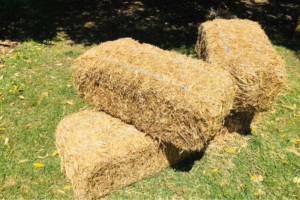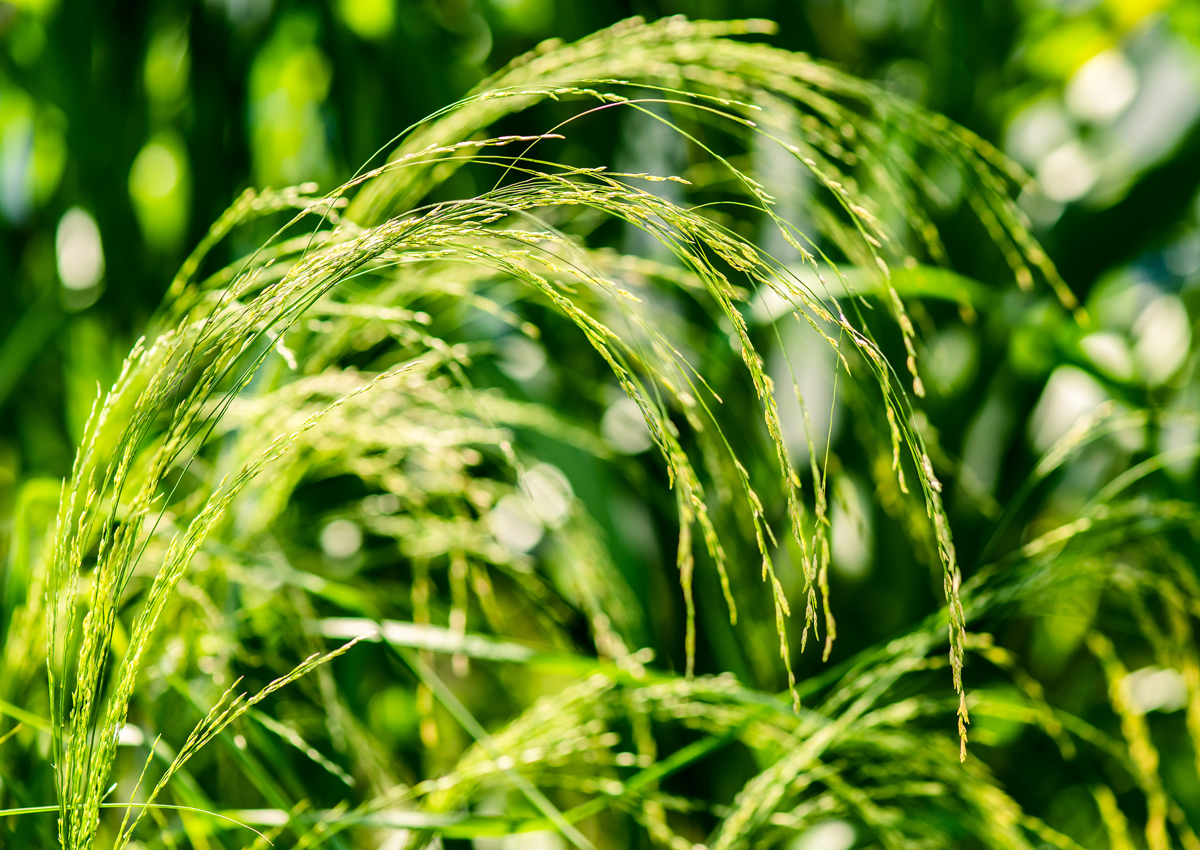In the early 2000s, the Agricultural Research Council (ARC) bred six varieties of Eragrostis tef (teff) for animal feed. The plant breeder’s rights (PBR) of six of ARC varieties: Ivory, Emerson, Witkop, Rooiberg, Emerald and Highveld, have since expired. Since 2022, ARC- Range and Forage Sciences, Cedara breeding unit collaborated with the University of KwaZulu-Natal on Patrick Rakau’s PhD project on breeding new teff varieties for dual human food and animal feed traits.
Collaborative Efforts for Improved Varieties
To date, 80 new M4 (third generation) lines seeds of teff were produced and soon to be ready M5 seeds (fourth generation), will be evaluated in different South African soils. This is good news for the agricultural sector in South Africa, and the world, because of the teff has multiple benefits for livelihoods.

Photos A: Patrick Rakau evaluating the M2 teff plant trial at the Agricultural Research Council – Cedara research station and B shows Emerson teff plant

Photo C: Professor Hussein Shimelis (right) visited Cedara research station – Agricultural Research Council
The Significance of Teff
Teff is an indigenous grass in Ethiopia and exists in white, red, brown and mixed varieties. It is commonly used as food for the people in Ethiopia and Eritrea and is gaining increasing attention due to its potential in satisfying the global food, nutritional and climatic challenges. To produce new climate-smart and improved teff varieties, collaboration and working together as scientists is thus important.
Nutritional quality of teff
Several research studies have confirmed that teff is rich in many essential amino acids; slowly digesting carbohydrates, essential amino acids and fatty acids; and contains nutritionally balanced minerals, vitamins, fibers, and other components.
Health benefit of teff
All varieties have almost similar chemical composition except brown, which is in iron and commonly used for prevention, treatment, and management of iron deficiency. Since it is proven to be free from gluten, a large number of researchers are conducting studies on the nutritional composition of teff and its processing qualities. The gluten-free nature also makes it preferable for celiac (i.e. chronic digestive & immune disorder) patients. Teff is low on the glycemic index and people with diabetes mellitus are recommended to feed on a diet having a low glycemic index and enriched in essential nutrients.

Diabetic mellitus is becoming a huge public health problem around the world. According to the International Diabetes Federation report in 2020, more than half a billion people are living with diabetes worldwide and this figure will increase by more than 20% in the coming 10 years. Several studies showed that the prevalence of diabetic mellitus is higher among people who live in urban areas and developing countries.
The nutritional compositions of individual food consumed frequently affect the occurrence of non-communicable diseases mainly diabetes, hypertension, cardiovascular diseases, cancer, and others. Even though diet differ from person to person, there are shared qualities of diet that play role in preventing and managing chronic disease such as diabetes. For instance, a diet with low glycemic index, rich in essential amino acids, fatty acids and fiber, containing a sufficient number of vitamins and minerals, is recommended for the prevention and management of diabetes. Studies show that individuals who consume teff in their daily life have better control of blood glucose and atherogenic lipoproteins.
A study done on mice also showed that teff can improve glucose tolerance, control body weight and regulate inflammation. All of these are used to reduce acute and chronic complications of diabetes mellitus patients. In addition, teff has an anti-mutagenic effect and prevent different types of mutation; as a results adding teff to the daily diet can potentially prevent and treat cancer.
Animal benefits
High yield and quality hay at a low cost are achievable since teff can be harvested multiple times during the growing season. The first harvest for teff will normally occur within 45 to 55 days after planting, depending on location and year, with the second cutting following 40-50 days thereafter. With two cuttings under good production practices, teff grown in Utah State, USA yielded 4-5 tons per acre with 10-14% protein content. Production inputs such as fertilizer, water, and pest control are also lower for teff compared to other warm season grasses like corn and sorghum.

Teff straw is the main by-product of teff grain production, a basal component of animal diets; valued for its high yields and quality. Additionally, it is considered an emergency forage in drought prone areas, and have relatively high production. In Ethiopia, it was reported to yield 14- 14.5 tons of green matter/ha, in the USA forage yield was about 4-6 tons of dry matter/ha in just 45-55 days. In South Africa, teff yields of 3.8 – 4.7 tons for dry matter/ha have been obtained during the late November and December plantings and maximum yields of 7.6 -9.4t dry matter/ha were obtained for September and October plantings.
Proposed outcomes
The benefits of teff for both humans and livestock can be achieved through further research that will increase social awareness, food security, improve human health, hay production and improve livelihoods of rural communities in South Africa. The introduction of teff in our daily diets may improve the health of most of our chronic patients in South Africa. There is also a high export demand of teff and communities producing in small scales can be introduced to supply chain markets. The ARC aspires to be in forefront in addressing these challenges facing agriculture through improved and demand-led research.
By: PN Rakau; ARC-Animal Production: Range and Forage Sciences

